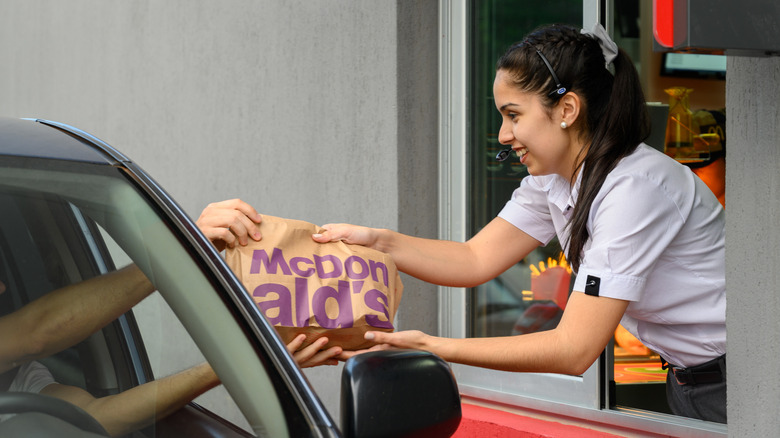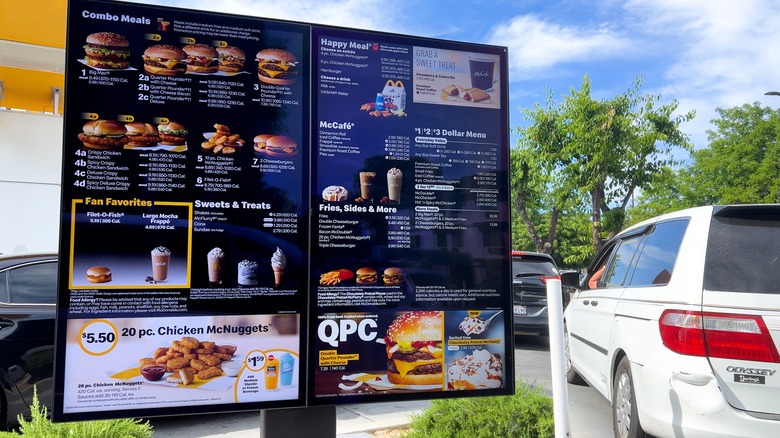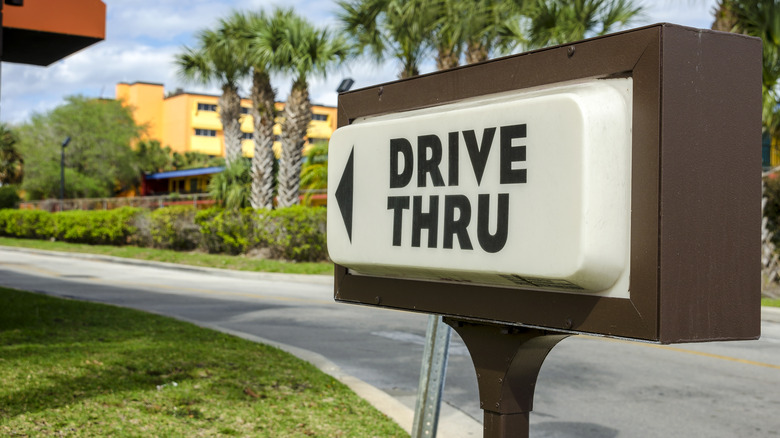How Drive-Thru AI Might Make Your Order More Expensive
We're living in the future, folks. Chipotle has a tortilla chip-making robot named "Chippy," and at Jack in the Box, robots can operate the deep fryer. The latest A.I. technology is daring to venture where it has never ventured before: customer service. Of course, that's not exactly right. If you think back to the last time you bare-knuckle boxed with an automated phone answering system, then you know what we're talking about (and how much of a struggle it typically is). Now, take that putrid memory and imagine it against the backdrop of the lunch rush in a fast food drive-thru line.
McDonald's has begun testing a new A.I. ordering system in several stores nationwide, and already it has accrued glaring backlash from fans, who have taken to TikTok to express their disapproval. According to complaints presented in various videos, the A.I. frequently mishears orders, often adding unwanted items or exorbitant quantities. In other instances, the A.I. overhears orders spoken by other customers in different drive-thru lines and adds those items as well. Not only is this frustrating for customers, it's the pits for the real human beings working inside the restaurant to assemble orders who are just as confused (and, now, also tasked with remaking incorrectly-placed orders and dealing with angry drive-thru guests). Worse, drive-thru A.I. might not just be an underperforming headache, but a tactic for upselling customers and making orders more expensive.
Tricking customers into ordering more items
In one TikTok, the McDonald's A.I. adds a soda that TikTok user @resinsbiren didn't want, and when they request for it to be removed, the system glitches and adds eight sweet teas. Indeed, the errors are so egregious as to be comical, like in another TikTok where the A.I. tacks on 28 orders of McNuggets despite the poster howling with laughter and telling it to stop. For as innocuous as these mishaps might seem, some less tech-savvy customers (or anyone in a rush, or who didn't get a receipt) might not notice the additional items in their order and be scammed into paying more for things they didn't want in the first place.
It could be more insidious than that, too. According to Dan Mosher, the president of Presto Automation Inc., artificial intelligence systems are more effective at "relentlessly upselling" customers, persuasively tacking on extra items to an order, via CNBC. Presto Voice is the A.I. order-taking software already in use at Carl's Jr., Hardee's, Del Taco, Checkers, and Rally's. Some fast food brands that have made the switch to A.I. cite the nationwide labor shortage as a key motivator. (Although, considering McDonald's recent lawsuit regarding child labor violations, a shouting match with a machine suddenly doesn't look so bad.) Still, as TikToker @resinsbiren reports exasperatedly pulling out of line and driving away (and they surely aren't the only one), A.I. ordering could be hurting sales instead of helping, at least for now.
What customers can expect looking forward
This isn't the first time McDonald's has announced its foray into A.I., although the company's stance on implementing artificial intelligence has been, at its clearest, gray. In July 2022, CEO Chris Kempczinski shared that, "while it may be great for garnering headlines," he didn't think wide-scale automation would fix staffing shortages, per QSR. Updated store air conditioning systems would be required to accommodate robot workers, Kempczinski argued, which wouldn't be practical. Meanwhile, in June 2022, McDonald's voice ordering A.I. technology was reportedly undergoing its initial tests and was consistently inaccurate, with accuracy rates in the low 80% range, according to Restaurant Dive. Now, as May 2023 rolls around, it looks like McDonald's ordering A.I. system has apparently been underperforming for nearly a year now, yet it doesn't seem to be going anywhere anytime soon.
Not all automated food service companies are looking to upsell their customers. On the contrary, last week, DoorDash announced that it would be implementing a new algorithm to reward restaurants that charge consistent prices in-store and for delivery with more visibility to app users. There's hope yet for inflation-weary consumers navigating an increasingly automated landscape.


